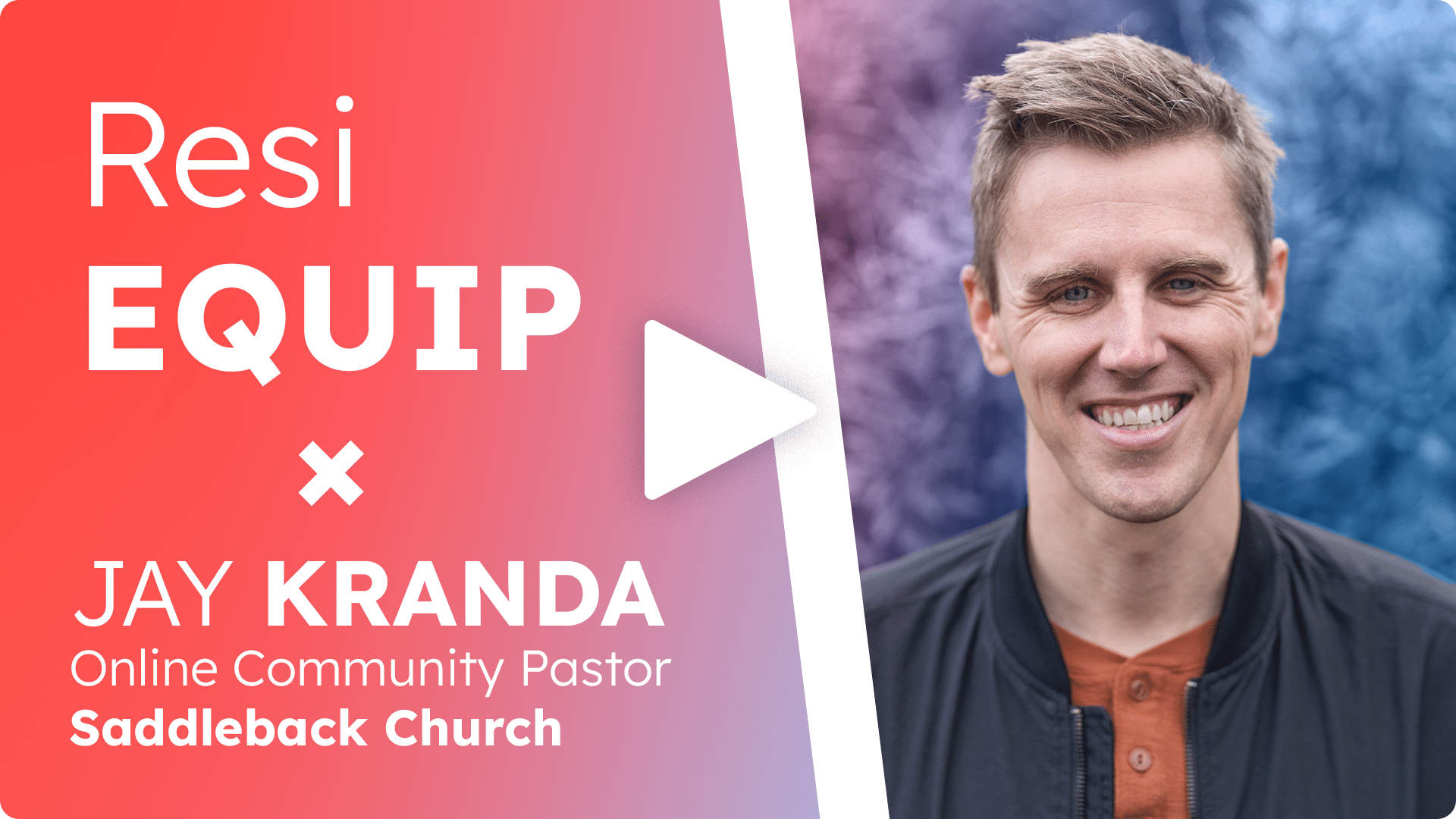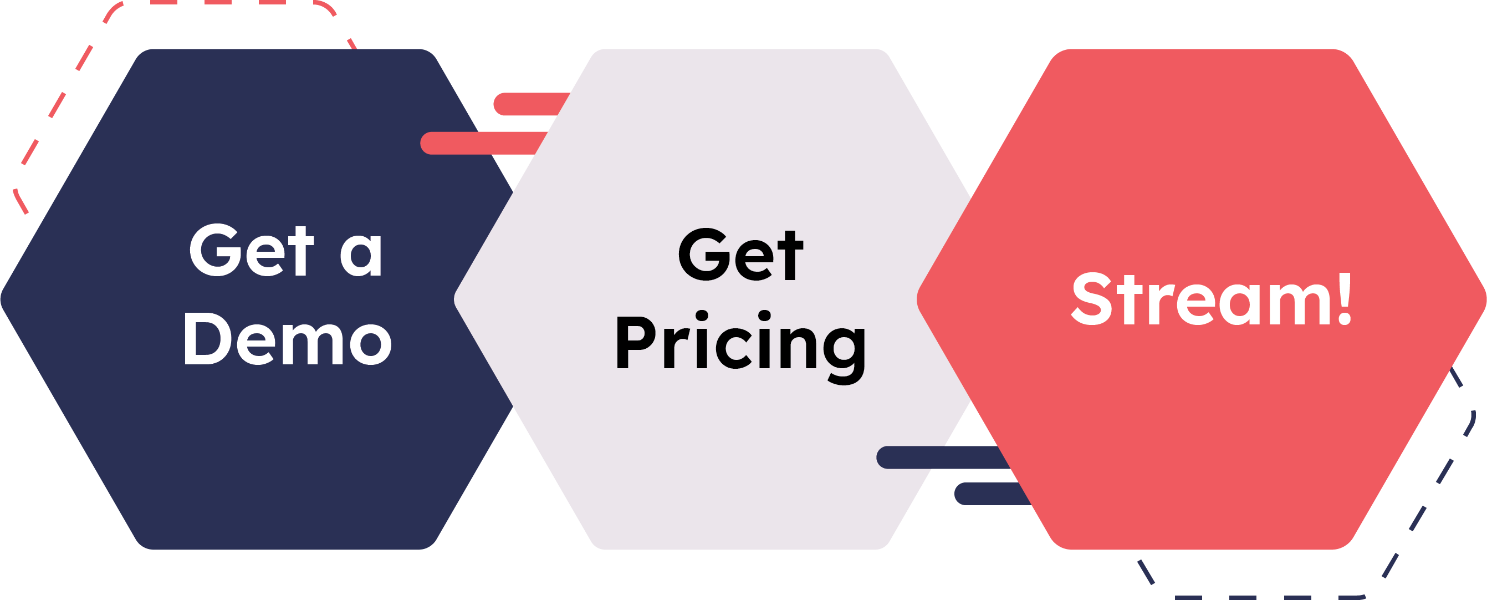
For church leaders, guiding a community through uncertain times isn’t just a job—it’s a calling. Yet, amidst the multitude of tasks and challenges faced daily, the decision to maintain a technologically advanced service, such as livestreaming, can often appear burdensome, time-consuming, and potentially conflicting with traditional values.
Once a stop-gap measure hastily adopted to remain connected with congregants during lockdown, livestreaming has since become an integral part of most churches’ online offerings. However, that hasn’t stopped some church leaders (and congregants) from questioning whether or not livestreaming is a worthwhile investment anymore.
Like any service provided by the church, the tangible benefits of livestreaming must be periodically weighed against any potential drawbacks. That’s just good stewardship. But before pulling the plug on your church’s livestream, here are five unexpected benefits you should consider.
#1
Livestreams Help Integrate Your Church’s Vision Into the Busy, Daily Lives of Your Congregation
It’s long been established that church attendance in the United States has been steadily declining for the past several decades. Perhaps more troubling, however, is that weekly church attendance among committed church members is also in decline. Even within the definitions used by surveys, “regular church attendance” has been adapted from weekly to “once or twice a month.”
Simply put, people are busy. Whether you blame it on an increasingly work-based culture, the demands of modern parenthood, or a plethora of travel and leisure activities, you can’t escape the reality that more and more people will point to their oversaturated schedules as their reasons for not attending church as often as they used to.
And while you may not view every reason or excuse as equally justifiable (and nor should you), allowing your congregants the ability to stay connected with your church “on-the-go” isn’t necessarily the tragic compromise some church leaders may make it out to be.
A livestreamed service, especially with on-demand options, allows the modern-day churchgoer to integrate your church’s teachings into their daily routine. Whether tuning in live or during a quiet moment in the week, the flexibility ensures that the time spent with your church is intentional, not rushed or crammed into their day out of rote obligation.
A Week in the Life
See how Pushpay and Resi can transform how you engage with your congregation.
Download infographic
Additionally, using your livestreaming hardware for more than just services—morning devotionals, prayer meetings, Q&As—help members remain connected and engaged, not just on Sundays but throughout the week.
#2
Livestreams Help Engage With Younger Generations Where They’re At—Online
Prepare yourself for some rather dispiriting statistics.
Average Daily Time Spent on the Internet By Age:
- 16—24 years: 7.2 hours
- 25—34 years: 7.08 hours
- 35—44 years: 6.32 hours
- 45—54 years: 6.07 hours
- 55—64 years: 5.15 hours
Regardless of your screentime preferences, you can’t help but acknowledge that people—especially young people—spend a lot of time online. The world has drastically changed over the last couple of decades, and perhaps none more so than within the realm of digital engagement.
You may not be completely comfortable with people solely engaging with your church online—and that’s understandable, but only to a point.
The reality is that people spend an inordinate amount of time on the internet, and they’re constantly being shaped—or discipled—by the content they’re interacting with.
And as technology continues to blur the line between the “real world” and the “online world”—through Augmented Reality (AR) and the like—it’s highly unlikely we’ll see this trend spiral downward anytime soon, if ever. And while it’s true most people have an innate longing for in-person gatherings and communal experiences (whether they realize it or not), they have to first be made aware of what they’re missing out on where they’re already at—which, in this case, via online means.
To put it more succinctly, you can’t expect to engage people where you want them to be. First, you have to meet them where they’re at in order to get them to where you want them to be. This is a mindset shift that can radically alter the way your church approaches digital evangelism.
If the internet really does serve as a “global public forum” (especially one where people increasingly spend most of their waking hours), then the Church needs to be a voice amid the din of competing truth claims.
#3
Livestreams Help Build Digital Pathways Toward In-Person Attendance
At first glance, the logic appears sound: If a church prevents people from engaging with their services online, then those people will be compelled to attend in-person. But on closer examination, that assumption leaves a lot to be desired.
Ending your church livestreams isn’t going to drive more in-person attendance any more than a musical artist removing their music from streaming services is going to increase concert attendance. In fact, it could lead to a gradual decrease in attendance over time.
Whether we want to admit it or not, we live in a world in which digital experiences inform, reinforce, and motivate human behavior and decision making in the “real world”—and vice versa.
If this is a tough concept to wrap your head around, think of any e-commerce platform or review aggregator website. Before buying a book, purchasing a movie ticket, or making a dinner reservation, you want to know the experience is worth the time and money you’re about to commit to it.
So, what do you do?
You go online to read reviews, look at pictures, watch videos, or crowd-source opinions from like-minded people. And then, with all of the relevant information gathered, you make the decision you feel is best for you and your needs.
So, you may not realize it because it feels so normal, but you’re constantly participating in a digital ecosystem to make better decisions for yourself—even for something as inconsequential as a book purchase or evening at the movies.
Decisions to visit, attend, or join a church aren’t made impulsively. For most people, it’s a life-altering choice that will have a significant impact on their community, parenting, and discipleship journey. They’re not walking into the sanctuary on a random Sunday morning after catching sight of your church sign on the way to brunch.
No, they’re “sampling” your church online first—checking out your social media, visiting your website, and probably watching (or listening) to some of your streamed services. Therefore, it’s imperative that these online “entry points” are maintained and presented with as much (if not more) care as your church’s lobby.
#4
Livestreams Help Make Your Church More Accessible, Inclusive, and Welcoming
The common stereotype of a “typical church livestream viewer” is less than flattering—a lazy couch potato who couldn’t be bothered to get dressed and drive to church, much less tithe or join a small group. However, not only is this stereotype unfounded, it can also be extremely harmful to some of the most vulnerable members of your church community if you base your attitude toward livestreaming around it.
From military personnel deployed overseas to a new mom who’s recently given birth, livestreams offer a convenient way for members of your congregation to stay connected with your church when they’re unable to be in the building. Are these people excluded from participating in your church’s teachings simply because of their temporary life circumstances—especially when they might need it the most?
And while it may be grim to think about, a not-so-insignificant portion of active church members are approaching life stages in which in-person attendance may be made more difficult by age, sickness, and injury. Should these people be denied participation in the life of your church simply because they’re not as able-bodied as they used to be?
Livestreams don’t just extend the church’s walls—they tear them down.
For the first time in church history, technology can help facilitate the full participation of your congregation—regardless of age, disability, sickness, or temporary medical situation. Leveraging these technological advances—like livestreaming—is just one of the ways the Church can be known as a haven for radical inclusivity and ensure that no one falls through the cracks—especially those deemed unimportant or forgotten by society.
#5
Livestreams Help Make Your Church More Resilient in an Unstable and Uncertain World
Think back to the good ol’ days of December 2019. Who could have predicted the impending wave of global uncertainty, technological innovation, and cultural turmoil on the horizon?
Could giving up on your church’s livestream be a step back in your church’s resiliency when the next unexpected challenges come barreling in, interrupting our ability to consistently gather in person once again? Natural disasters, extreme weather conditions, and sociopolitical upheaval combined with an increasingly complex and interconnected global world mean we live in particularly perilous and fragile times.
By maintaining a church livestream, you aren’t just ensuring that your congregants are served today, but also building resilience for any future challenges, be they local or global, that might disrupt your community’s rhythm in the short term and long term.
Not Pulling the Plug On Your Church’s Livestream
Several hundred years ago, it was considered extremely controversial (and, at times, illegal) to own a personal copy of the Bible not printed in Latin. It took the advent of a new technology—the printing press—to radically alter the direction of the Church and accelerate the spread of the Gospel.
Is it possible that the Church stands on the cusp on another technological revolution that will redefine what it means to gather together?
Will there be people who use church livestreams as a crutch to not attend in-person? Yes. It’s impossible to account for every way a technological innovation will be used and abused. However, the theoretical actions of a few freeloaders shouldn’t inform the foundations of your church’s philosophy toward livestreaming.
If leveraged correctly, wisely, and strategically, your livestream can weave a sustaining and inviting thread throughout every aspect of your church’s ministry.
The value of a church livestream isn’t ephemeral. It offers accessibility, maintains community, provides flexibility, extends outreach, and builds resilience.
If you want to learn more about how Resi can improve your church’s livestreams (through error-proof streaming, no less) or if you’re already a Resi customer and want to see how you can increase engagement through our on-demand services, reach out to one of our streaming experts to experience a live demo.







